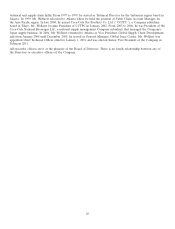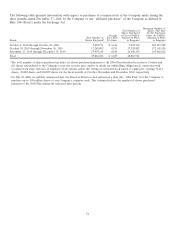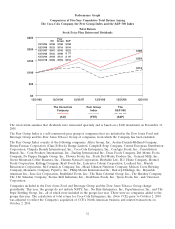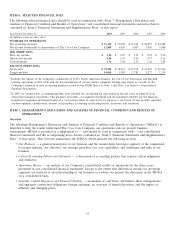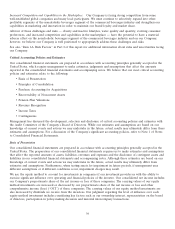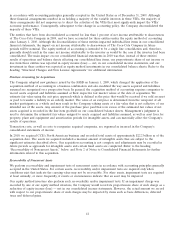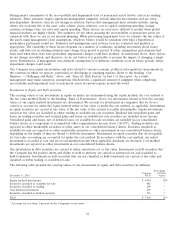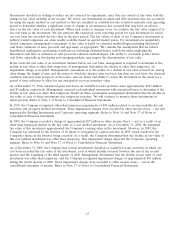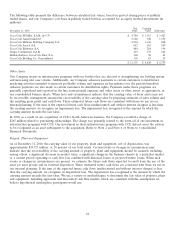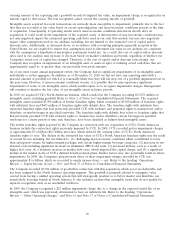Coca Cola 2010 Annual Report Download - page 41
Download and view the complete annual report
Please find page 41 of the 2010 Coca Cola annual report below. You can navigate through the pages in the report by either clicking on the pages listed below, or by using the keyword search tool below to find specific information within the annual report.Increased Competition and Capabilities in the Marketplace. Our Company is facing strong competition from some
well-established global companies and many local participants. We must continue to selectively expand into other
profitable segments of the nonalcoholic beverages segment of the commercial beverages industry and strengthen our
capabilities in marketing and innovation in order to maintain our brand loyalty and market share.
All four of these challenges and risks — obesity and inactive lifestyles, water quality and quantity, evolving consumer
preferences, and increased competition and capabilities in the marketplace — have the potential to have a material
adverse effect on the nonalcoholic beverages segment of the commercial beverages industry and on our Company;
however, we believe our Company is well positioned to appropriately address these challenges and risks.
See also ‘‘Item 1A. Risk Factors’’ in Part I of this report for additional information about risks and uncertainties facing
our Company.
Critical Accounting Policies and Estimates
Our consolidated financial statements are prepared in accordance with accounting principles generally accepted in the
United States, which require management to make estimates, judgments and assumptions that affect the amounts
reported in the consolidated financial statements and accompanying notes. We believe that our most critical accounting
policies and estimates relate to the following:
• Basis of Presentation
• Principles of Consolidation
• Purchase Accounting for Acquisitions
• Recoverability of Noncurrent Assets
• Pension Plan Valuations
• Revenue Recognition
• Income Taxes
• Contingencies
Management has discussed the development, selection and disclosure of critical accounting policies and estimates with
the Audit Committee of the Company’s Board of Directors. While our estimates and assumptions are based on our
knowledge of current events and actions we may undertake in the future, actual results may ultimately differ from these
estimates and assumptions. For a discussion of the Company’s significant accounting policies, refer to Note 1 of Notes
to Consolidated Financial Statements.
Basis of Presentation
Our consolidated financial statements are prepared in accordance with accounting principles generally accepted in the
United States. The preparation of our consolidated financial statements requires us to make estimates and assumptions
that affect the reported amounts of assets, liabilities, revenues and expenses and the disclosure of contingent assets and
liabilities in our consolidated financial statements and accompanying notes. Although these estimates are based on our
knowledge of current events and actions we may undertake in the future, actual results may ultimately differ from
estimates and assumptions. Furthermore, when testing assets for impairment in future periods, if management uses
different assumptions or if different conditions occur, impairment charges may result.
We use the equity method to account for investments in companies if our investment provides us with the ability to
exercise significant influence over operating and financial policies of the investee. Our consolidated net income includes
our Company’s proportionate share of the net income or loss of these companies. The carrying values of our equity
method investments are increased or decreased by our proportionate share of the net income or loss and other
comprehensive income (loss) (‘‘OCI’’) of these companies. The carrying values of our equity method investments are
also decreased by dividends we receive from the investees. Our judgment regarding the level of influence over each
equity method investment includes considering key factors such as our ownership interest, representation on the board
of directors, participation in policy-making decisions and material intercompany transactions.
39


